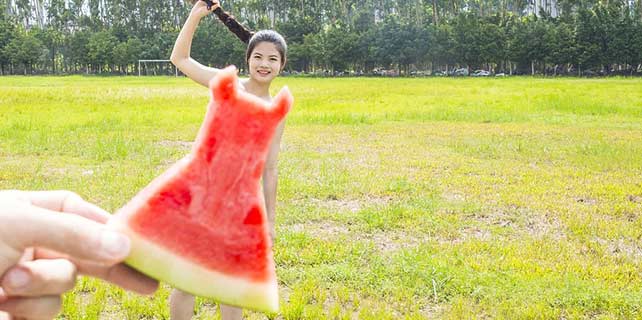Human sniffers help identify toxic tracks
 |
|
An odor identifier sniffs a sample of material to be used for a plastic track to determine whether it meets environmental standards.[Liu Kun/China Daily] |
At a laboratory in Wuhan, Hubei province, five certified odor identifiers-people with sensitive noses-were assigned a special task. Each of them, wearing a white gown, opened a bottle containing a 20-gram sample of synthetic running track material, and inhaled slowly for five seconds. Then they wrote down their results.
The sniffers, who are among the first such professionals in Wuhan, were testing whether the plastic, planned for use in a running track installation at a primary school, measured up to environmental standards. Another technician will give the samples a final score based on the scores given by the sniffers.
"It is very difficult to test products made of complex synthetic materials, such as plastic tracks, by physical or chemical instruments because most instruments can only test for a few substances at most, such as formaldehyde or toluene," said Wang Zhaohui of the testing and research center of the Sports Engineering Key Lab of the General Administration of Sport in Wuhan. "Smelling is a more direct and reliable way to determine whether a sample is poisonous."
After the work of the odor identifiers, other tests using physical or chemical instruments will be conducted to determine whether the samples are up to standards, Wang said.
Odor identifiers are usually employed to determine whether emissions of one kind or another are within a certain limit. The results provided by the certified sniffers have legal effects. Pollutant sources that emit excessive odors-as determined by the expert sniffers-are subject to punishment under laws and regulations, Wang said.
The center has 15 certified odor identifiers whose average age is 30, said the center's Shang Jianhua, who has been an odor identifier for three years.
Odor identifiers must be in good condition, and they must adhere to strict requirements, such as not using cosmetics or eating hot pot, which could affect their sense of smell, he said.
The center is planning to train odor identifiers specifically for plastic track producers so that better quality tracks can be made, Wang said.
Synthetic running tracks became a top concern for parents who have children in primary or middle schools after media reports about complaints about toxic tracks that sickened children.
In Sijing Third Primary School in Shanghai's Songjiang district, dozens of students displayed symptoms such as nosebleeds, coughs and sore eyes in September. Many of their parents blamed it on substandard plastic material used on the playground, saying it emitted a strong odor, according to a report in China Youth Daily in October.
Testing reports provided by the school showed that toxic gases emitted from samples-including formaldehyde, benzene and toluene-met the standards adopted in Shanghai, the report said.
Local standards for emissions of plastic tracks may not be reliable and may need improvement, the report said.
















